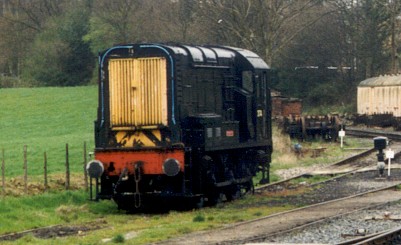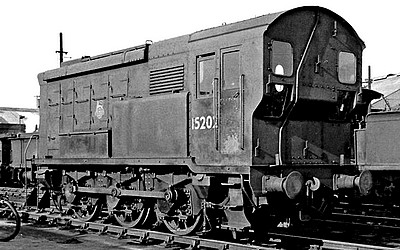
Hither Green, 1960 (Ben
Brooksbank)
One of
three pioneer 0-6-0 diesel-electrics and a
precursor for the Class 08, built by the Southern
Railway in 1937
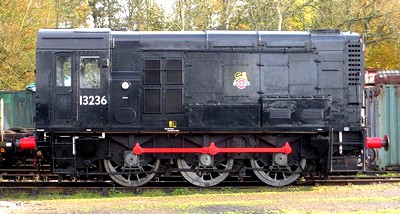
Horsted Keynes, 2009 (Duncan
Bourne)
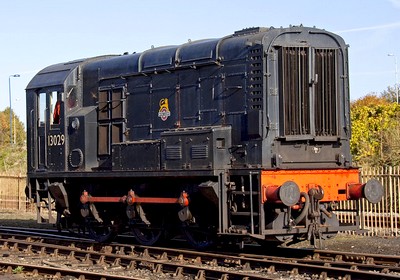
Preserved 13029, 2010 (Tony
Hisgett), with early BR emblem
|
|
Built at the BR Works of
Crewe, Darlington, Derby and Doncaster, the
design in effect went back to earlier examples of
0-6-0 diesel-electric shunters (which both the
London Midland and Scottish Railway LMS as well
as the Southern Railway SR had experimented with
in the 1930s). There were also 26
locomotives of the near-identical but
higher-geared Class 09, as well as 171 similar
locomotives fitted with different engines and
transmissions (some of which became Class 10 and
Class 11), which together brought the total
number of outwardly-similar machines to 1193.
With
such figures it is hardly surprising that the
class was virtually omnipresent and to be seen
working at many major stations and freight yards
all over Britain as rail traffic patterns and
operation still required shunting both of freight
as well as passenger stock.
Their
presence in numbers lasted well into the late
1970s and early 1980s before the move to multiple
units for passenger services and fixed rake
freight trains did away with most shunting
requirements previously tackled by the Class 08.
As a
consequence, more and more 08s and 09s began to
drop off the books, and the early 1990s saw
hardly any class 08 left in service on BR.
However, many retired locos were purchased by
heritage railways or exported. 60 years after
their introduction, some 60 Class 08 locomotives
are preserved, and around 100 remain in active
shunting work on industrial sidings and even,
although in very reduced numbers, on the main
British rail network. These small numbers are
dwindling fast, however, as any required shunting
moves are now being performed by the locomotives
assigned to the trains.
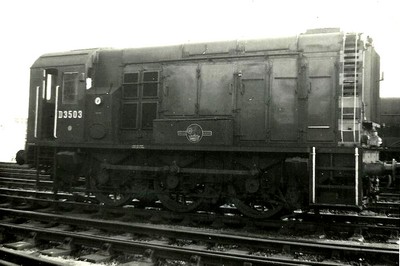
Bristol, 1963 (Hugh
Llewelyn), with later style BR emblem
|





